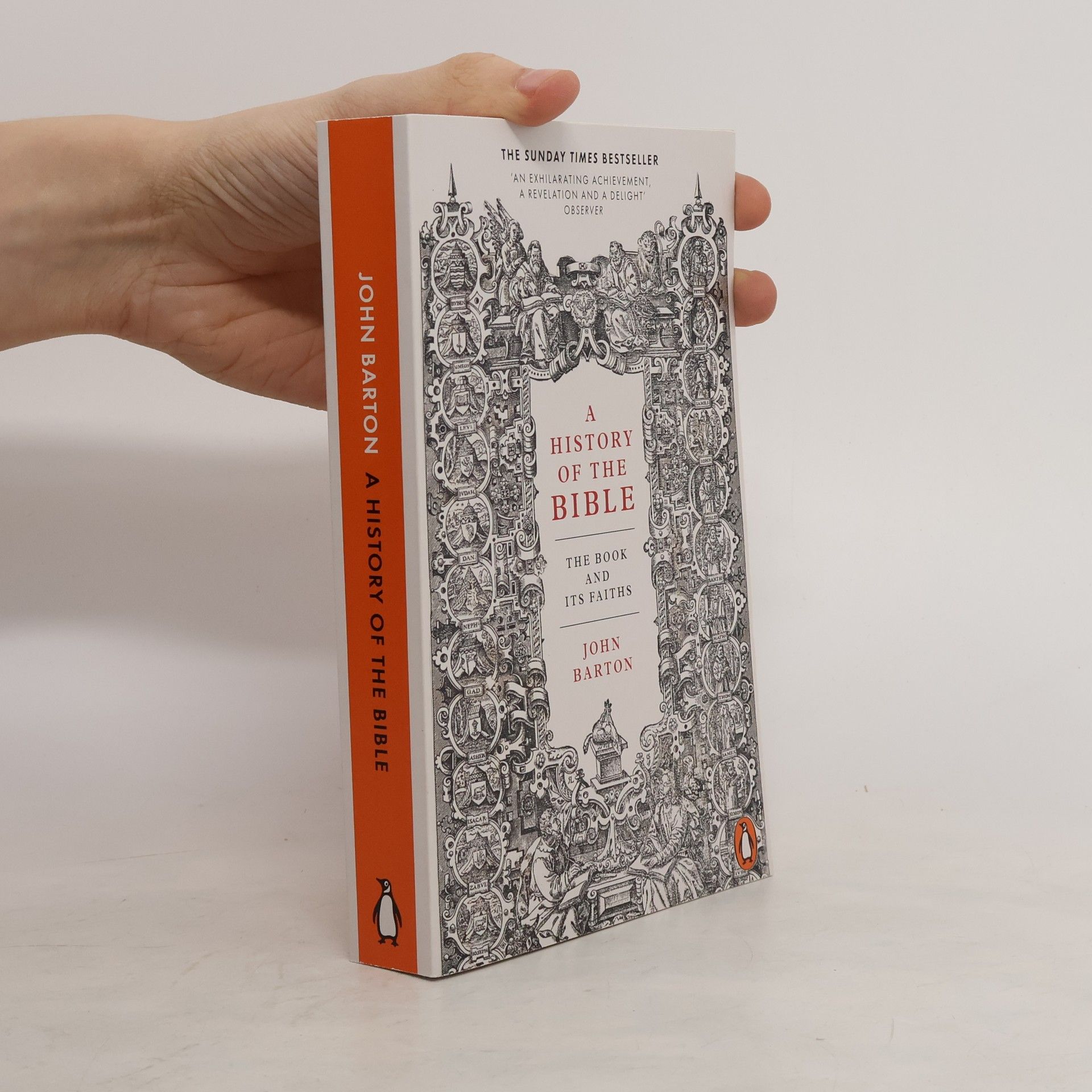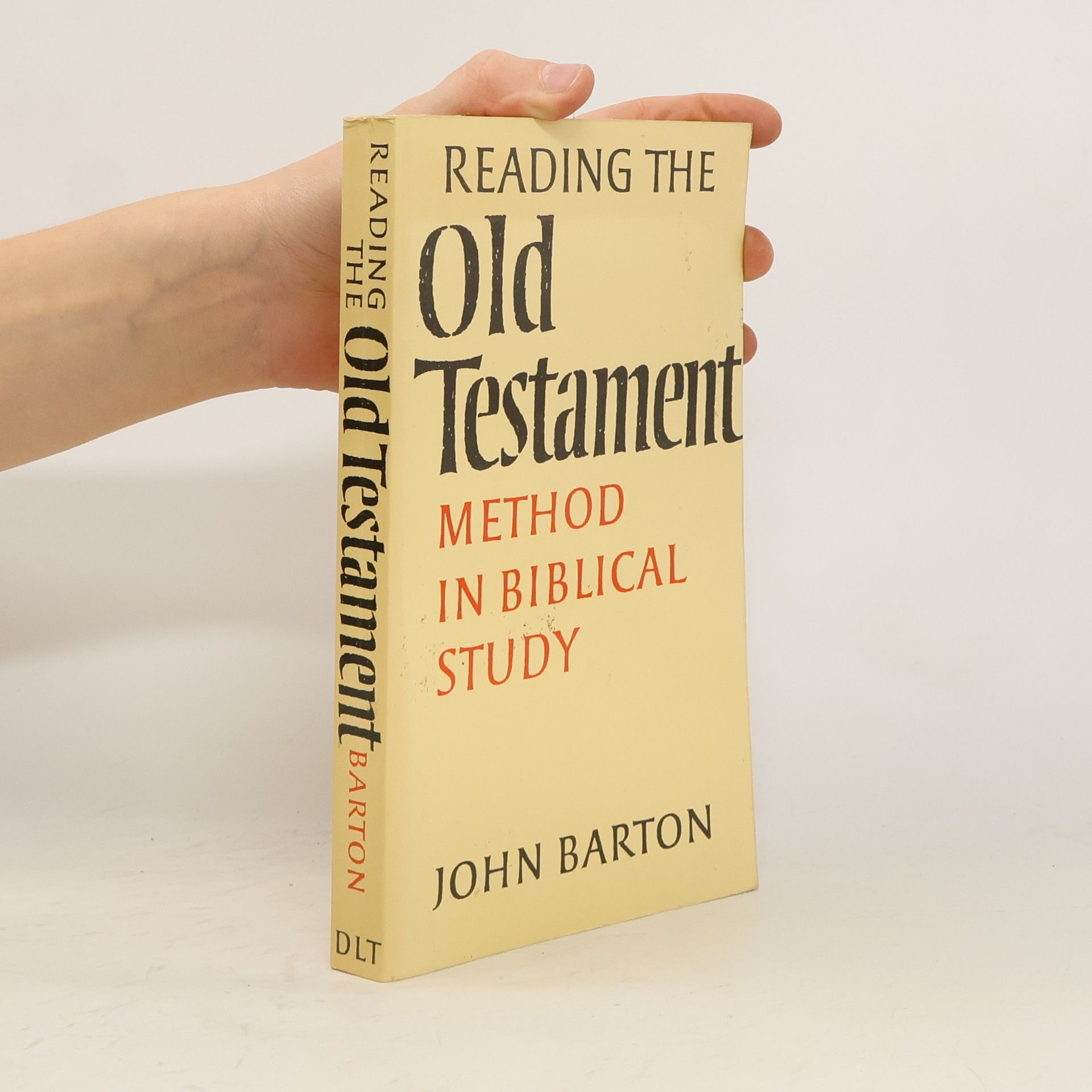John Barton Book order
John Barton is a distinguished scholar in the interpretation of Holy Scripture, based at the University of Oxford. His work delves deeply into biblical theology, particularly examining prophetic texts and their perception in ancient Israel after the exile. Barton's writings offer profound insights into the spiritual and theological messages within biblical works, focusing on their intricate interpretation.







- 2023
- 2022
John Barton used to live in the non-disabled world. Then he developed symptoms of an inherited condition that affected his mobility, closely followed by Parkinson's disease. John is an accredited psychotherapist and former journalist and in this book he explores the physical, political and psychological meanings of disability.
- 2022
From a distinguished Oxford scholar and the author of A History of the Bible, an examination of how biblical translation works and why it matters. Throughout history, most Jewish and Christian believers have understood scripture not in the languages in which it was first written but rather in their own—in translation. In The Word, acclaimed Bible scholar John Barton explores how saints and scholars have negotiated the profound challenges of translating the Bible while remaining faithful to the original. In addition to considering questions of literal versus free translation, literary style, inclusive language, and more, Barton draws out scriptural translation’s role at critical junctures in religious history. Far from a mere academic exercise, biblical translation has shaped how we answer faith’s most enduring questions about the nature of God, the existence of the soul, and the possibility of salvation
- 2022
John Barton (ur. 1948), anglikański biblista z Oksfordu, podsumował w niniejszej książce długie lata swoich badań nad Biblią, przedstawiając fascynującą opowieść o historii kształtowania się tej Księgi, jaką dziś znamy, o jej recepcji i interpretacji. Oparł się w tym na dwóch założeniach: Po pierwsze, nie ma jednoznacznej relacji między Biblią a zasadami wiary przyjmowanymi przez oparte na niej religie. Nie sposób wyczytać z niej ich konkretnego kształtu, a na dodatek biblijne ekwiwokacje sprawiają im kłopot. Zarazem, wbrew przyjętemu mniemaniu, ani chrześcijaństwo, ani judaizm nie skupiają się w swojej praktyce na Piśmie jako jedynej, świętej księdze. Nie jest ono „konstytucją” dla żadnej z religii, lecz raczej opowieścią założycielską. Po drugie, Biblia nie powstała jednorazowo jako zamknięta całość, lecz ewoluowała, a jej kanon jest wynikiem historycznych negocjacji. Ewolucja Biblii hebrajskiej (Starego Testamentu w nazewnictwie chrześcijańskim) trwała mniej więcej od VIII do II wieku p.n.e. Również kanon Nowego Testamentu kształtował się długo, a odrzucenie apokryfów nie wynika jednoznacznie z ich treści. Kościół akceptował naturalnie tworzący się konsens w tej mierze, przy czym na początku nie było uzgodnionego tekstu. Wszystko to Barton opisuje i komentuje na podstawie najnowszych badań historycznych i filologicznych. Odkrycie ostatnich stuleci – że Biblia ma historię – znajduje przekonujące potwierdzenie.
- 2021
Low-carbon electricity systems require energy storage on all time scales to accommodate the variations in solar and wind power. The research described in this book builds on recent research into nickel-iron battery-electrolysers or “battolysers” as both short-term and long-term energy storage. For short-term cycling as a battery, the internal resistances and time constants have been measured, including the component values of resistors and capacitors in equivalent circuits. The dependence of these values on state-of-charge and temperature have also been measured. The results confirm that a nickel-iron cell can hold 25% more than its nominal charge. However, this increased capacity disappears at temperatures of 60°C and may be dissipated quickly by self-discharge. When operating as an electrolyser for long-term energy storage, the experiments have established the importance of a separation gap between each electrode and the membrane for gas evolution and established the optimum size of this gap as approximately 1.25 mm. The nickel-iron cell has acceptable performance as an electrolyser for Power-to-X energy conversion but its large internal resistance limits voltage efficiency to 75% at a 5 hour charge and discharge rate, with or without a bubble separation membrane.
- 2021
Exploring the richness of Biblical narratives reveals their depth beyond childhood interpretations. These stories emerge from a sophisticated literary tradition, articulated in expressive Hebrew and interwoven with diverse writings. The book encourages readers to engage with the narratives using adult perspectives, uncovering often overlooked dimensions, wit, and humor. By doing so, it highlights the universal appeal and contemporary relevance of these tales, inviting a fresh appreciation for their complexity and significance.
- 2020
Exploring the profound impact of a pivotal literary work, this scholarly examination delves into its historical significance and cultural influence. Authored by an Oxford scholar and Anglican priest, the book offers insights into the themes and narratives that have shaped society. It provides a comprehensive analysis of the text's evolution and its role in various historical contexts, making it an essential read for those interested in literature's power and legacy.
- 2020
Die Geschichte der Bibel
Von den Ursprüngen bis in die Gegenwart
- 2020
A History of the Bible
- 640 pages
- 23 hours of reading
This book tells the story of the Bible, how it came to be constructed and how it has been understood, from its remote beginnings down to the present. John Barton describes how the narratives, laws, proverbs, prophecies, poems and letters which comprise the Bible were written and when, what we know - and what we cannot know - about their authors and what they might have meant, as well as how these extraordinarily disparate writings relate to each other. He sheds new light on even the most familiar passages, exposing not only the sources and traditions behind them, but also the busy hands of the scribes and editors who assembled and reshaped them. Untangling the process by which some texts which were regarded as holy, became canonical and were included, and others didn't, Barton demonstrates that the Bible is not the fixed text it is often perceived to be, but the result of a long and intriguing evolution. Tracing its dissemination, translation and interpretation in Judaism and Christianity from Antiquity to the rise of modern biblical scholarship, Barton elucidates how meaning has both been drawn from the Bible and imposed upon it. Part of the book's originality is to illuminate the gap between religion and scripture, the ways in which neither maps exactly onto the other, and how religious thinkers from Augustine to Luther and Spinoza have reckoned with this. Barton shows that if we are to regard the Bible as 'authoritative', it cannot be as believers have so often done in the past
- 2012
This book provides a detailed exploration of the important elements of the theology underlying the book of Amos. It considers Amos as a figure representing social justice, surveys major developments in the critical assessment of the book and examines the history of the book's reception.
